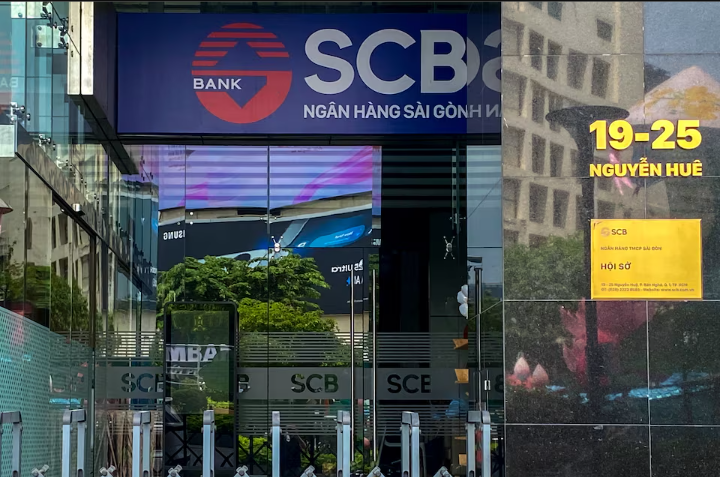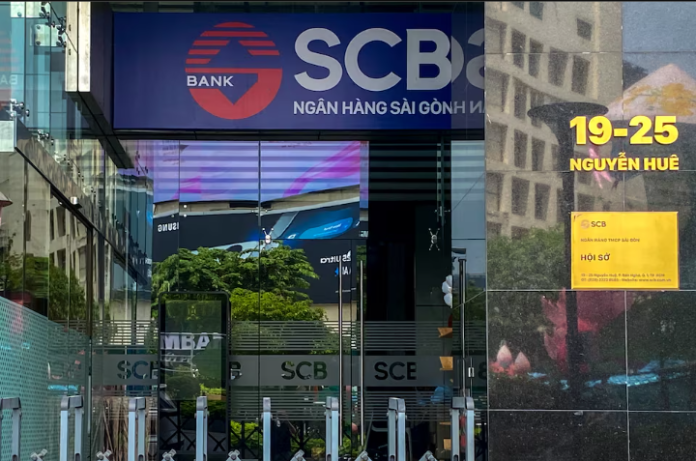Vietnam is grappling with the aftermath of its largest financial fraud, as the Saigon Joint Stock Commercial Bank (SCB) struggles to stay afloat. Following a massive bank run in 2022 triggered by the arrest of real estate tycoon Truong My Lan, the State Bank of Vietnam has injected nearly $26 billion to prevent SCB’s collapse. Now, a 15-year rescue plan led by local developer Sun Group is in the works, but is it enough to restore confidence?
The $26 Billion Lifeline: What’s Happening?
SCB, once one of Vietnam’s largest commercial banks, became the epicenter of a $44 billion fraud scheme, allegedly orchestrated by Lan using the bank’s funds to build her real estate empire. Her arrest in October 2022 caused widespread panic, with depositors withdrawing funds at an alarming rate. To keep SCB from collapsing, the central bank had no choice but to provide emergency funding, an amount equivalent to 5% of Vietnam’s 2024 GDP.
Despite these efforts, SCB remains entirely dependent on these special loans to stay operational. According to documents obtained by Reuters, Sun Group has proposed a long-term revival plan, aiming to repay the central bank within 15 years, provided market conditions remain stable.
The Sun Group Rescue Plan: A Lifeline or a Gamble?
Sun Group, a major Vietnamese developer, has been tasked with leading SCB’s restructuring under a plan approved by the central bank in November 2023. Here’s what the plan entails:
- Recapitalization: Sun Group pledges to inject at least $120 million into SCB’s core capital.
- Asset Liquidation: The bank would recover funds by selling land rights and collateral properties used for previous loans.
- New Investments: SCB aims to generate income through investments in government bonds and infrastructure projects.
- Debt Repayment Timeline: The central bank would start getting its money back in year 14, with full repayment expected by year 15.
A Bank on Life Support
Despite the ambitious plan, SCB’s financial situation remains dire. According to internal reports:
- SCB’s capital adequacy ratio—a key indicator of a bank’s financial health—stood at minus 176% at the end of 2024.
- Deposits have plunged from 669 trillion dong (October 2022) to just 19.2 trillion dong by late 2024.
- Most of SCB’s past loans were allegedly issued to shell companies controlled by Lan, backed by overvalued collateral.
Given these numbers, SCB is far from a stable institution, raising doubts about whether the 15-year rescue timeline is realistic.
Will the Vietnamese Government Approve the Plan?

One major uncertainty is whether Vietnam’s government and Communist Party will back the restructuring plan. While Sun Group has extensive experience in real estate and banking, it remains unclear if their proposal will be accepted or if stricter government intervention will be required.
If the plan is approved, SCB could slowly regain stability. However, if Sun Group fails to execute, Vietnam could face another major financial shock, further shaking investor confidence.
What’s Next for Vietnam’s Banking Sector?
The SCB crisis exposes deeper issues within Vietnam’s banking sector, particularly regulatory weaknesses and the risks of unchecked corporate influence. This case serves as a warning that without stronger oversight, similar financial disasters could occur.
With SCB still relying on emergency loans and depositors hesitant to return, the next few months will be crucial in determining whether Vietnam’s largest bank scandal will end in recovery—or another collapse.



